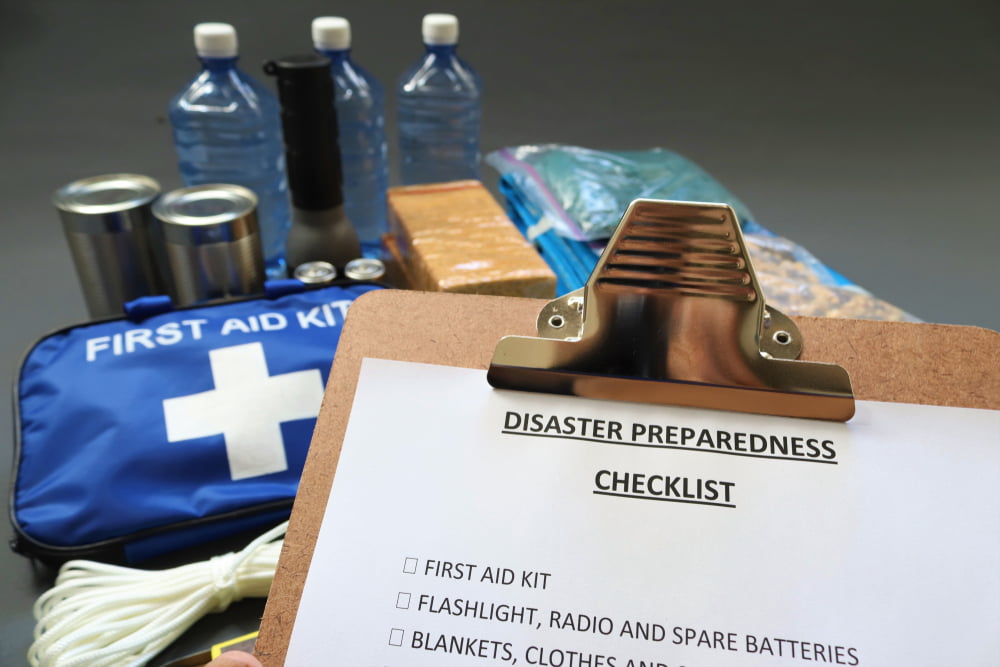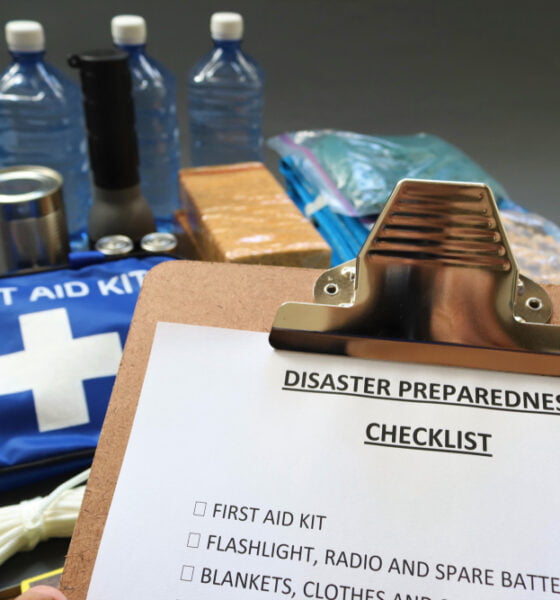

Sustainability
The Link Between Disaster Management and Sustainability
The climate crisis is becoming a greater concern than ever. Earlier today, a report was issued with some harrowing findings. The report said that it is already too late to save the ice in the Arctic and that the Arctic will be free of sea ice by the 2030s.
Climate change is also causing natural disasters to become more common than ever. The United States Geological Survey cites that the problem is not going to get any better anytime soon.
Disaster management and sustainability, while often intersecting, may not always be considered closely linked. However, the increasing frequency and intensity of natural disasters due to climate change make it essential to understand the relationship between these two concepts, as it is vital for building resilient societies. This article explores the ways in which disaster management contributes to sustainability, highlighting the significance of preventive, mitigative, and adaptive measures in reducing the social, economic, and environmental impacts of disasters.
By delving into diverse facets of disaster management, we uncover the potential of sustainable solutions that go beyond merely strengthening resilience. Such solutions pave the way for long-term well-being and ultimately shape societies that can effectively confront the challenges posed by an ever-changing world.
1. Understanding the Connection between Disaster Management and Sustainability
The intricate relationship between disaster management and sustainability lies in their mutual objective to foster resilient societies that can effectively tackle and endure adversities. Disaster management is primarily concerned with diminishing the vulnerability of communities in the face of potential calamities.
On the other hand, sustainability zeroes in on ensuring the long-term well-being of the environment, society, and economy. When these two vital concepts are thoughtfully combined and executed, the result is more robust protection for our communities and conscientious preservation of valuable resources for upcoming generations.
As climate change continues to leave its mark on our environment, the demand for skilled public health professionals is surging like never before. This presents a prime opportunity for individuals who aspire to make a difference in the face of global challenges. If you’re passionate about contributing to a safer and more sustainable future, an MS in disaster management can serve as an excellent starting point.
Online programs, in particular, provide exceptional flexibility, allowing you to balance your personal and professional commitments while acquiring the necessary knowledge and skills.
2. Climate Change Adaptation and Disaster Management
As our planet continues to experience the consequences of climate change, adaptation strategies emerge as vital components in the realm of disaster management. Addressing issues like sea-level rise and heat waves, these approaches enable us to confront climate change head-on and proactively minimize the impacts of disasters.
When we invest in climate-resilient infrastructure and implement innovative solutions, we foster greater resilience within our communities, which ultimately leads to long-term sustainability. Furthermore, the integration of climate change adaptation into disaster management reduces environmental degradation, preserving our natural resources for future generations.
Incorporating these adaptation strategies ensures a more sustainable, resilient world better equipped to face the challenges that climate change presents.
3. Community-Based Disaster Management for Sustainable Development
Community-based disaster management offers a powerful approach to building sustainable societies capable of withstanding the devastating impacts of disasters. At the heart of this method lies the engagement and active participation of local communities in risk reduction initiatives. By providing communities with the necessary knowledge, resources, and tools, they can make informed decisions, identify vulnerabilities, and implement tailored solutions that safeguard their well-being and livelihoods.
An essential aspect of this approach is promoting a sense of ownership and responsibility within communities. When people feel empowered to address the risks they face, they are more likely to take proactive measures to enhance their resilience. This, in turn, contributes to sustainable development as communities become better equipped to bounce back from disasters and minimize the social and economic repercussions.
4. Eco-Friendly Disaster Response and Recovery
When faced with the devastating effects of disasters, it’s imperative to prioritize environmentally conscious methods during response and recovery operations. A sustainable approach can make a substantial difference in mitigating the environmental impact of such efforts. One way to achieve this is through the integration of renewable energy sources, such as solar panels and wind turbines, which can provide clean, reliable power to affected communities.
Another critical aspect of eco-friendly disaster management is minimizing waste production. This can be achieved by reusing and recycling materials whenever possible, thereby reducing the strain on landfills and promoting a circular economy. Additionally, the careful management of water resources during recovery operations can help prevent pollution and conserve this vital resource for future use.
Resource conservation should also extend to the reconstruction process. Employing green building techniques, such as using energy-efficient materials and optimizing natural light, can reduce long-term environmental impacts while enhancing the resilience of structures against future disasters. Taking advantage of renewable energy is also important for disaster preparation.
5. Enhancing Urban Resilience for Sustainable Cities
We have previously mentioned the importance of sustainability in urban planning. A growing number of cities are trying to find ways to lower their carbon footprint and use fewer natural resources.
Boosting urban resilience is vital for creating sustainable cities capable of withstanding and bouncing back from disasters. Achieving this goal requires the development and execution of disaster management strategies that focus on bolstering urban resilience.
One such approach involves the integration of green infrastructure, which offers various benefits like reduced flood risks, improved air quality, and enhanced biodiversity. Additionally, fostering smart growth principles can help optimize land-use planning and urban development, thereby minimizing vulnerabilities and creating more livable communities.
These concerted efforts not only support cities in overcoming future challenges but also contribute to their overall sustainability. By addressing the environmental, social, and economic aspects of urban resilience, we pave the way for thriving urban centers that provide a high quality of life for their inhabitants.
6. Investing in Disaster Risk Reduction for a Sustainable Future
Allocating resources toward disaster risk reduction is both cost-effective and essential in fostering sustainability. Proactive measures, including the development of early warning systems and infrastructure improvements, play a significant role in mitigating the devastating impacts of disasters.
In turn, these actions contribute to the long-term well-being of communities and the environment. Furthermore, we can more efficiently manage disaster-related costs and optimize the use of limited resources by emphasizing prevention over reaction. This approach not only bolsters the resilience of communities but also protects valuable ecosystems and natural habitats. As a result, investing in disaster risk reduction paves the way for a sustainable future where people and nature can thrive in harmony despite the ever-present threat of natural disasters.
Ultimately, prioritizing these investments is a smart and forward-thinking decision that safeguards the interests of present and future generations.
Conclusion
In conclusion, the vital link between disaster management and sustainability is instrumental in building a more resilient and sustainable future. Integrating these two concepts allows us to effectively mitigate the impacts of disasters, protect vulnerable communities, and preserve valuable resources for generations to come.
From community-based approaches to eco-friendly recovery measures, sustainable disaster management practices lead to long-lasting resilience and well-being. As we face the challenges of climate change and a rapidly evolving world, the prioritization of the intersection of disaster management and sustainability becomes increasingly crucial. Committing to this approach ensures the long-term health and prosperity of our planet and its inhabitants, building a more secure future for all.


 Environment10 months ago
Environment10 months agoAre Polymer Banknotes: an Eco-Friendly Trend or a Groundswell?

 Environment12 months ago
Environment12 months agoEco-Friendly Home Improvements: Top 7 Upgrades for 2025

 Features9 months ago
Features9 months agoEco-Friendly Cryptocurrencies: Sustainable Investment Choices

 Features10 months ago
Features10 months agoEco-Friendly Crypto Traders Must Find the Right Exchange





























